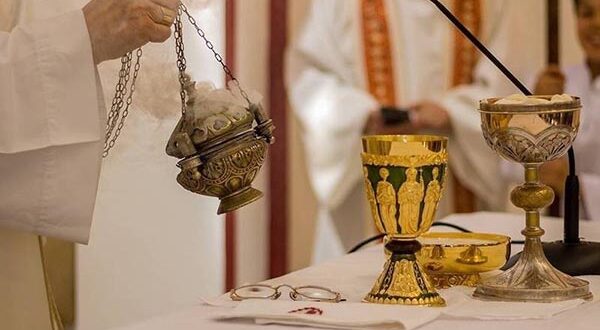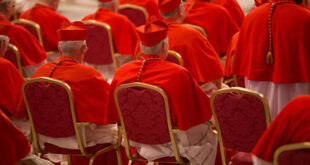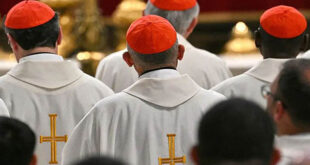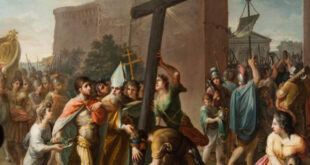Catholic liturgy is not merely a set of rites and ceremonies; it is a mystical bridge that unites the earthly with the divine, the visible with the invisible, and the temporal with the eternal. It is the beating heart of the Church’s life, where the faithful are invited to partake in the salvific mystery of Christ. But what does this mean in practical and theological terms? How can the liturgy transform our daily lives and deepen our connection with God?
This article will delve into the richness of the liturgy from a theological perspective, inspired by Saint Thomas Aquinas, and offer tools to live it more consciously and transformatively.
The Deep Meaning of the Liturgy: More Than a Ritual
The word “liturgy” comes from the Greek leitourgia, meaning “work of the people.” However, in the Christian context, its meaning transcends human action to refer to the “work of Christ,” and thus to humanity’s participation in divine action. As the Catechism of the Catholic Church (CCC 1069) teaches, the liturgy is “the work of our redemption” accomplished and celebrated in the Church.
Saint Thomas Aquinas explains that the liturgy is, above all, participation in the perfect praise Christ offers to the Father. In his Summa Theologiae, he notes that the sacraments and liturgical rites are visible instruments of the invisible grace God bestows upon us. Through them, the eternal becomes present in time.
The Liturgy as a Connection Between Heaven and Earth
Every liturgical action draws us into communion with Heaven. In the Mass, for instance, the earthly Church unites with the heavenly Church in an eternal hymn of praise. This mystery is particularly evident in the Sanctus, when we proclaim: “Holy, Holy, Holy is the Lord.” At that moment, the earthly liturgy mirrors the unceasing worship that angels and saints offer before God’s throne.
Saint Thomas emphasizes that this act of worship is more than symbolic; it is a real participation in Christ’s sacrifice. The Eucharist, the center and summit of the liturgy, is not merely a memorial but the very sacrifice of Christ, re-presented in an unbloody manner. This is the clearest bridge between Heaven and Earth, where the divine descends, and the human ascends.
The Attributes of the Liturgy: Beauty, Unity, and Sacredness
1. Beauty That Reflects the Divine
The beauty of the liturgy—from church architecture to Gregorian chants and sacred vestments—is not a superficial luxury but an expression of God’s glory. According to Saint Thomas, beauty is an attribute of God Himself, and the beautiful has the power to elevate our souls toward Him. Thus, a well-celebrated liturgy, respectful of tradition and attentive to detail, helps us experience the divine mystery more profoundly.
Practical application: Participate in the liturgy with a sense of reverence. Observe the details: the altar, the priest’s gestures, the hymns. Allow beauty to draw you into a deeper encounter with God.
2. Unity in Diversity
The liturgy unites all the faithful, regardless of language, culture, or state of life. It reminds us that we are one Body in Christ. Traditional liturgy, such as the Tridentine Mass, highlights this unity by employing Latin, the universal language of the Church, and by preserving common gestures and words worldwide.
Practical application: Appreciate the richness of the Church’s liturgical traditions. If possible, attend a Mass in the Extraordinary Form and experience the universality of the faith.
3. Sacredness That Transforms
The liturgy lifts us out of the mundane to draw us into the divine sphere. Liturgical gestures, words, and symbols are imbued with spiritual significance, inviting us to set aside worldly concerns and focus on the eternal.
Practical application: Prepare for Mass as if you were meeting the King of the universe. Arrive early, observe silence, and say a personal prayer to ready your heart.
The Relevance of Liturgy in Today’s World
In a world marked by noise and distraction, the liturgy offers a space of stillness and transcendence. It teaches us that life is not limited to work, worries, or social media but is destined for something much greater: communion with God.
Yet, it also poses a challenge for Catholics today, particularly in the face of trends toward the banalization of the liturgy. As Benedict XVI pointed out, the liturgy should not focus on us but on God. When we seek to adapt the liturgy to our personal preferences, we risk losing its transcendent character.
How to Apply the Fruits of the Liturgy to Daily Life
- Live each day as an extension of the Mass: Offer your daily actions as a spiritual sacrifice, uniting them with Christ’s sacrifice.
- Foster a life of prayer: The liturgy is the summit of our faith but must also be supported by a personal prayer life.
- Practice charity: The communion we receive in the Eucharist compels us to live out the commandment of love in our daily lives.
- Educate your children in the beauty of the liturgy: Help them understand the meaning of liturgical gestures and words so they grow to love the sacred.
Conclusion
The liturgy is not merely a ritual or another tradition; it is the place where Heaven touches Earth and where humanity is lifted to God. In it, we participate in the mystery of divine love that saves and transforms us. By living the liturgy with reverence, attentiveness, and openness, we not only draw closer to God but allow His grace to permeate every aspect of our lives.
Saint Thomas Aquinas reminds us that “all the power of the sacraments comes from the Passion of Christ.” In every Mass, prayer, and liturgical gesture, that power is present, ready to transform our hearts and the world around us. Are we willing to open ourselves to this mystery and let the liturgy be the bridge that leads us to Heaven?







One comment
Pingback: “In the Presence of the Angels”: Address to Oblates – Abbey of St. Walburga